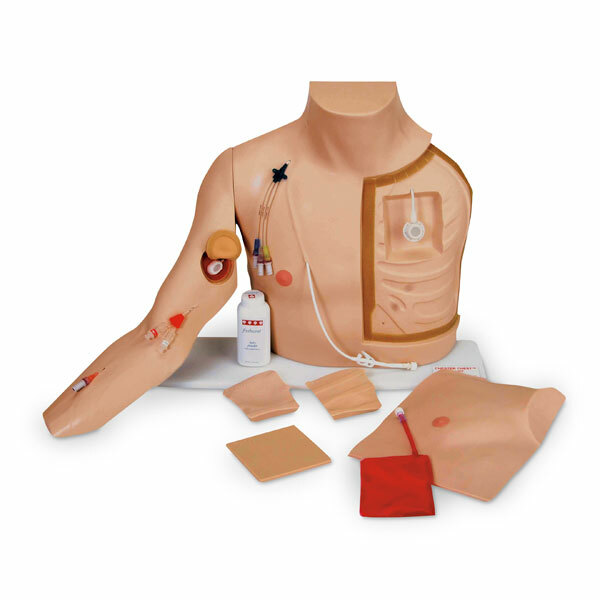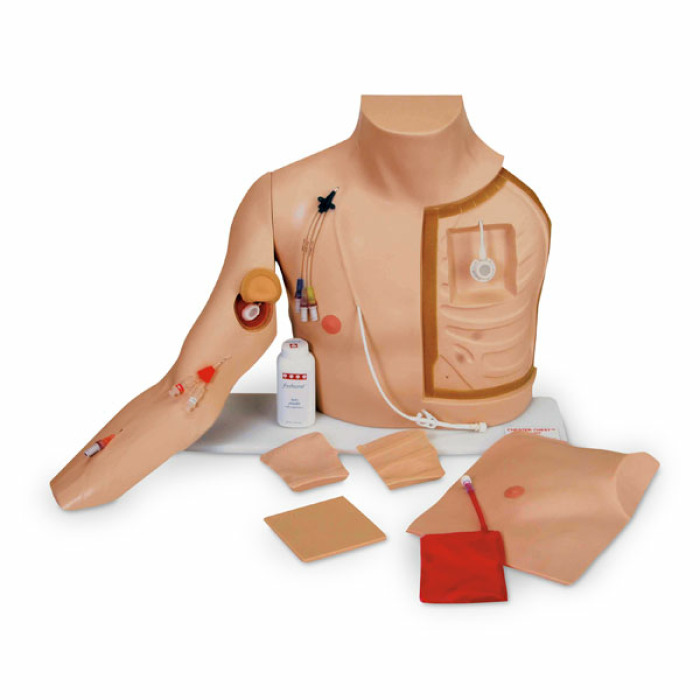SB18636 - Chester Chest
By buying you get
797 Points
More than a purchase. You get service and expert advice. Ask which products and combinations are recommended for you.
Develop total competence with the three most common types of long-term vascular access routes with one simple, portable training aid.
External Central Catheter
- Pre-positioned, surgically placed in the right chest
- Subcutaneous tunnel is visible up to and just over the clavicle
- Distinguishable Dacron® cuff
- Distal catheter end is pre-attached to the blood reservoir bag
Implanted Vascular Access Device
- Located in the left chest under a specially formulated flap designed to simulate real human tissue
- Situated over a rigid underlying surface with molded ribs and a recessed area for the interchangeable inserts
- Three difficult accessing inserts placed either under or over the port to simulate palpating and accessing a port with one of the following types of placements: normal, "tipping", "wandering", or "deeply placed"
Peripheral Placed Central Catheter
- Located in the rotated, extended, detachable right arm
- Dual lumen 5FR PICC exits the slightly raised, basilic vein on the right inner biceps
- Optional peripheral port can be added to the recessed area
- posterior to the PICC insertion site
- The base of the recessed area is made of soft material that permits the port to "float" when accessed
- Tissue flap included when placed over the port allows for a realistic feel when palpitating and accessing
- Pre-positioned 20G IV catheter in the right forearm
- Catheters are pre-attached to a blood reservoir bag
- Complete blood draws, heparinization, and fluid infusion while attached or unattached to the torso
- Right arm peripheral port
- Subclavian, Triple lumen, and Jugular catheter
- Cannula, injection, puncturing - filter
- Trup
- Quantitative unit
- ks

SB18636 - Chester Chest




